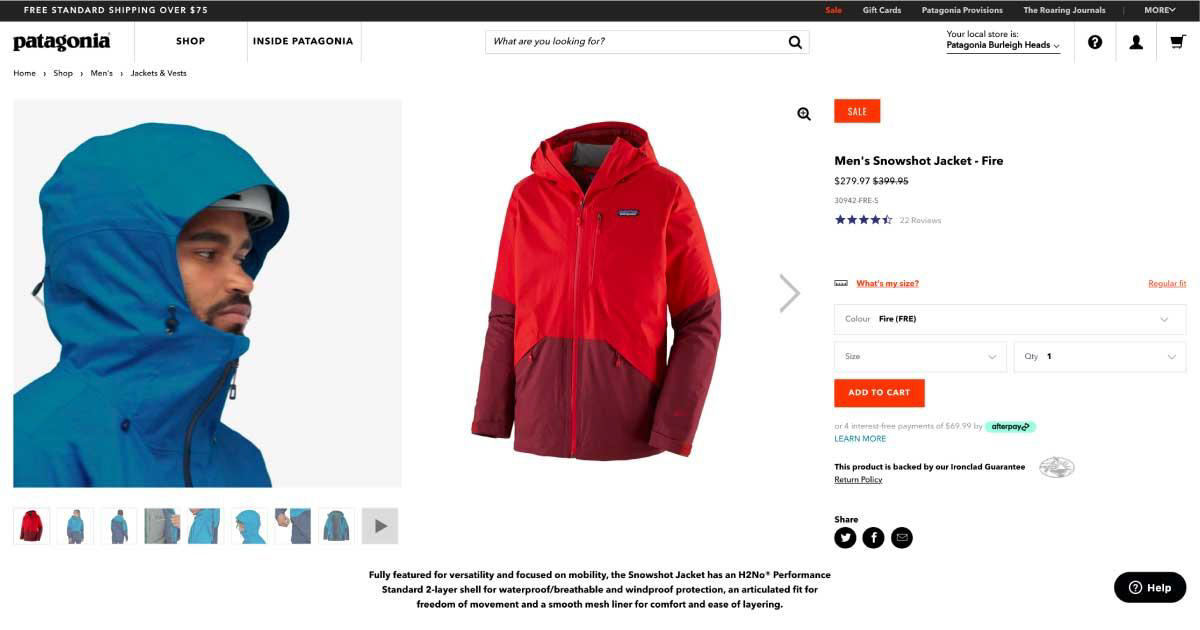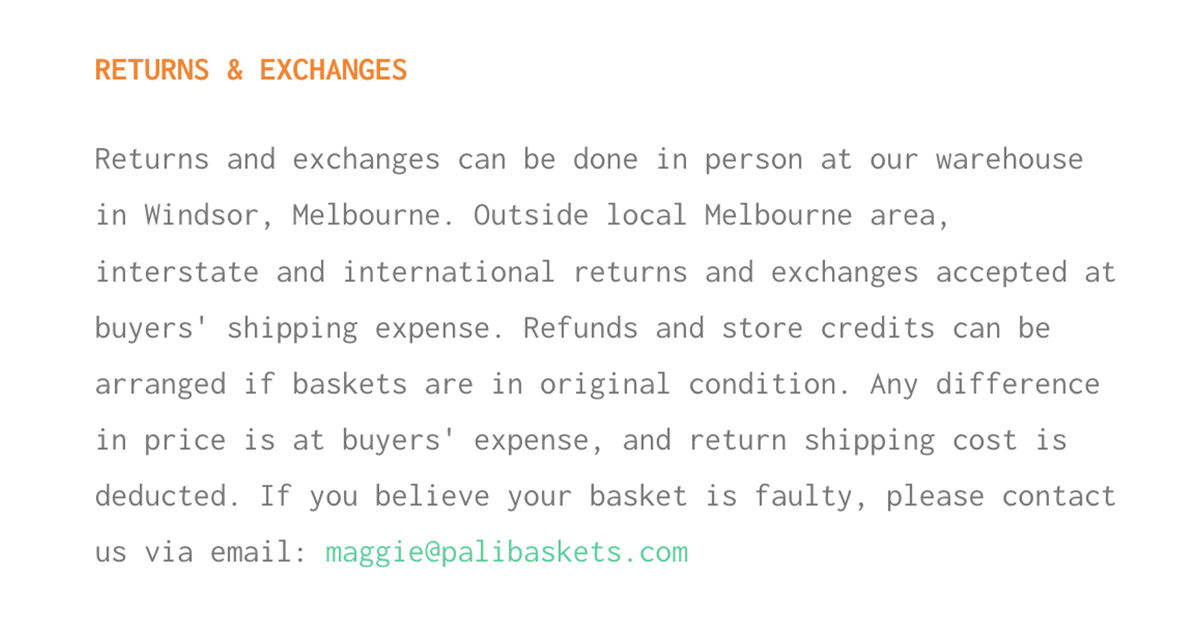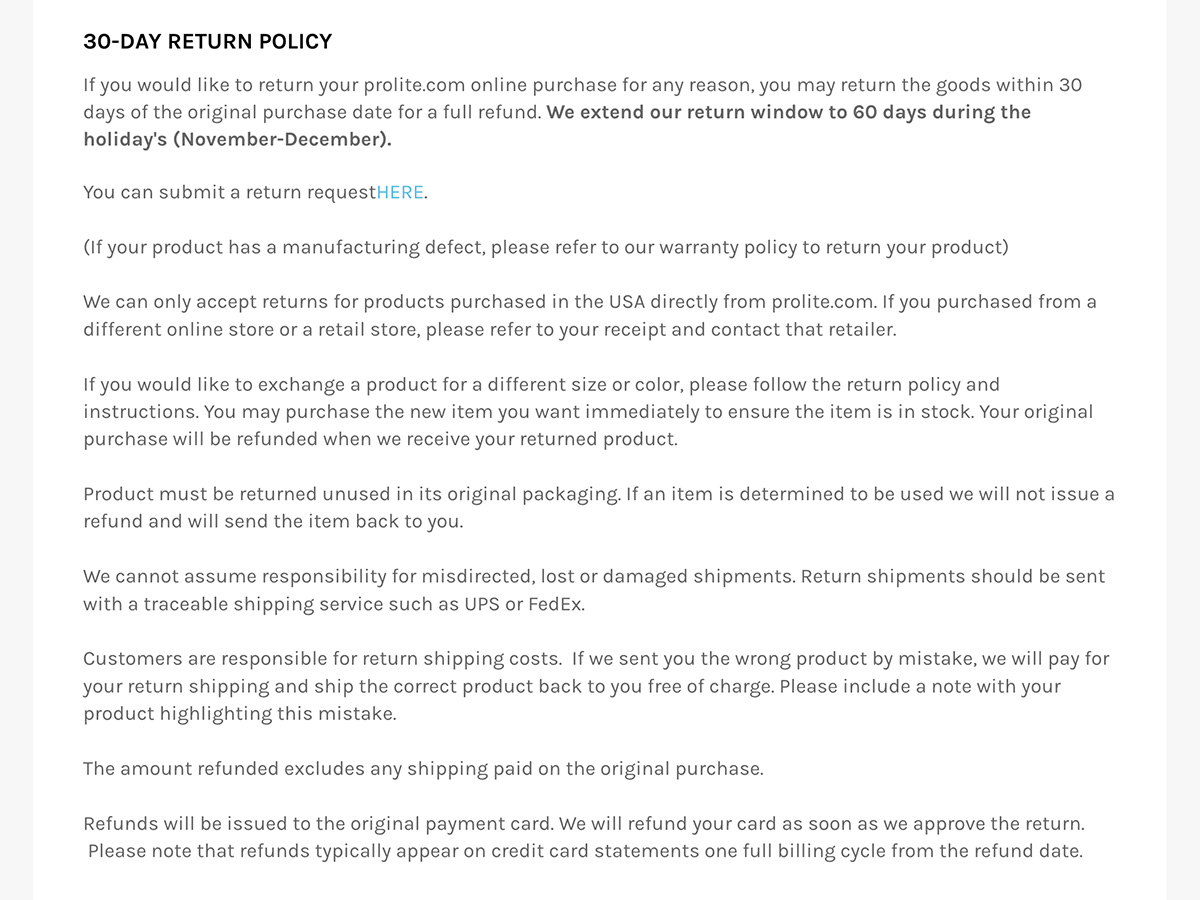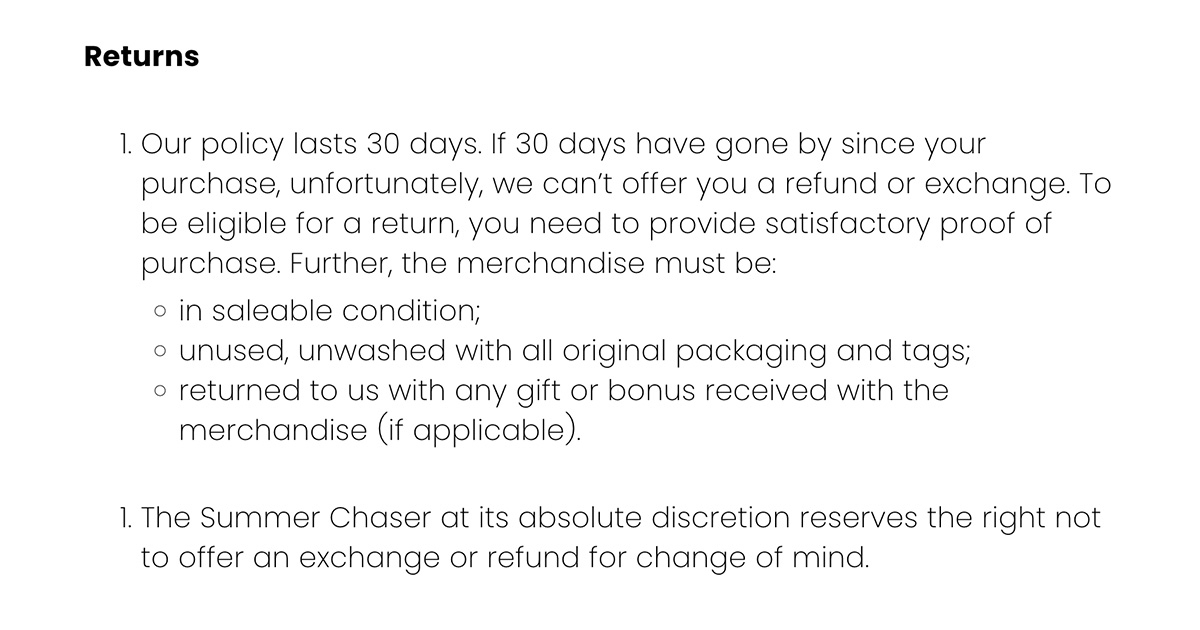Return policies when shopping online are a lot like the rules to a board game; it’s hard to enjoy (and win) without knowing the rules. When launching an online store, it’s important to have a returns policy before you start taking orders. Otherwise you risk making unhappy customers even more unhappy by making one up as you go along. So how do you create one? We’ll show you, in 5 steps.
Well class, congratulations, you’ve made it! It’s Week 6 of Sendle Academy. No, wait, you can’t leave yet Gloria, class isn’t actually over. We’ve got a lovely bit of symmetry today, being the last week of class. We’ll be talking about returns – an often overlooked aspect in a truly robust, clear and trustworthy eCommerce small business.
If you’d like a recap of the last 5 weeks, take a gander at free shipping (Week 1), shipping policy (Week 2), sustainable marketplaces (Week 3), shipping as a brand statement (Week 4) and last week’s unforgettable unboxing experiences (Week 5).
1. When should I accept a product return?

Along with a gigantic boost to online shopping and record sales, COVID brought with it a huge surge in the need for easy returns. It was an eye opening time for stores previously unaccustomed to offering returns, or where their policy stated ‘no returns’.
~ Allys Ton, Head of Brand at EasyPost
Suddenly the only way to get the things we needed (aside from food and toilet paper) was online. And that meant a lot of things turning up for consideration at home. Followed by a whole lot of “it doesn’t fit” and “I thought it was purple, not navy blue”.
So, what are your options when offering returns?
- Any time: Use this option only if you offer a 100% lifetime guarantee. Otherwise you’re just asking for your return policy to be abused.
- Within 30 days of purchase: This timeframe is commonly used because it takes shipping time into consideration while not letting the process drag on too long. It’s important to set the expectation that your customer contacts you sooner to start the process, such as three weeks after ordering.
- Never: Some items can’t be resold, so it wouldn’t make much sense to accept returns. More on that in a bit.
2. Who should pay for the return?

In 2020, return shipments cost $550 billion. That’s not a cheap change of heart.
Consumer data backs this up. 42 percent of customers say they have returned an online purchase in the last six months. Where 5-10% of in-store purchases are returned, eCommerce return rates can be anywhere from 15-40%. So, your customer wants a return? Who should be the one to foot the bill?
The shipper should
Free shipping and returns are all the rage these days thanks to giant companies, many of which don’t even bother processing the returns. You didn’t know? Lots of stuff you return goes straight to landfill. As with many big business practices, this doesn’t translate well to small ones. In order to keep those narrow margins from getting wiped out completely, many small business shippers only pay for return shipping when an item is defective or if the order’s wrong. Some will also pay to ship returns, but not exchanges.
~ EasyPost
Note! Sendle returns are set up for the shipper to pay. If you want to charge the customer while using Sendle returns, you can refund their purchase price minus the return shipping cost. Learn more about Sendle returns.
Cost to the customer
This is the most common scenario. Much the same way they have to go back to a store to return something they bought there, a customer is usually responsible for shipping costs when returning an item. They probably know their local shipping options, but don’t be shy about referring them to Sendle! It’s just as easy for personal use as it is for small businesses.
3. What can be returned? What about exchanges?

Before considering what to offer a return or exchange on, make sure your product pages are ship-shape.
Patagonia displays this jacket with seven product photos and a video so that prospective buyers can see the item from all angles. There’s no doubt here about what the jacket will look like when it arrives.
That lack of uncertainty is not only reassuring to buyers – it can also save store owners time on customer support questions and the hassle of pesky returns.

Image courtesy: Patagonia
If a return or exchange is the best way to retain your customer and keep them coming back, consider offering one or more of the following:
Return
On anything suitable for resale when returned in original, unused/unworn condition.
Exchange
On anything suitable for returns, with the understanding that it’s for a replacement item. Think clothes that were tried on but not washed or worn, or exchanging for a different color or style. You should also exchange items that are printed to order like t-shirts and art if they are defective.
Neither
Custom or personalized orders shouldn’t be accepted for returns or exchanges unless you made a mistake. If it was made to someone’s specifications, it’s not really suitable for resale.
Most businesses also don’t accept returns or exchanges for:
- Sale items
- Closeout or clearance items
- Food
- Digital downloads
- Health and personal care items
- Underwear or swimwear (even if the protective filmy thing is still there)
- Gift cards
~ EasyPost
It depends
You may like to change your returns policy at certain times of the year. Return-a-Palooza – yes, the January rush of return shipping after the holiday season has earned its name – is a time you may like to be more lenient with regard to folks getting their Christmas shopping mistakes back to you.
4. Review your shipping policy

This step is really important. Depending on where you live, you may be subject to your country or state’s specific laws regarding returns. Businesses in Australia should get across consumer guarantees and repair, replace, refund laws, explained in detail by theAustralian Competition and Consumer Commission.
If you operate from the United States, be aware that customers in every state have the right to cancel purchases for a full refund for three business days, and can always get a full refund for defective items. FindLaw has an excellent roundup of state-specific return and refund laws.
5. Give that policy some polish

Now that you’ve figured out the rules, it’s time to make them easy to read, accessible and prominent. Clear communication on your site or online store reduces misunderstandings, and everything customers read is a branding opportunity. Remind customers that you’re grateful for their business and hope they love their items. Your returns policy is meant to protect you, not to deflect sales. A good return policy can actually help grow your small business.
Here are 3 examples from Sendlers, that we love (them and their return policy):
Pali Baskets
Pali Baskets’ return policy is simple, easy to read, and so friendly you want to stop by the warehouse even if you don’t have a basket to return. Cute font!

Pro-Lite
Pro-Lite has a large product line of expensive sporting goods, and their policy is very clear about a few things: manufacturing defects are handled through the warranty, purchases from stores aren’t handled through the site, and customers are responsible for tracking their own return shipments.

The Summer Chaser
Here’s something to keep in mind from The Summer Chaser. Do you send any gifts or bonus items with your shipments? If you want those back, too, you need to say so.

Ideally you won’t have to deal with too many returns, but with a good returns policy and Sendle Returns making everything super easy (and 100% carbon neutral, to boot), the returns you do get won’t wreck you day, or your customer's.


